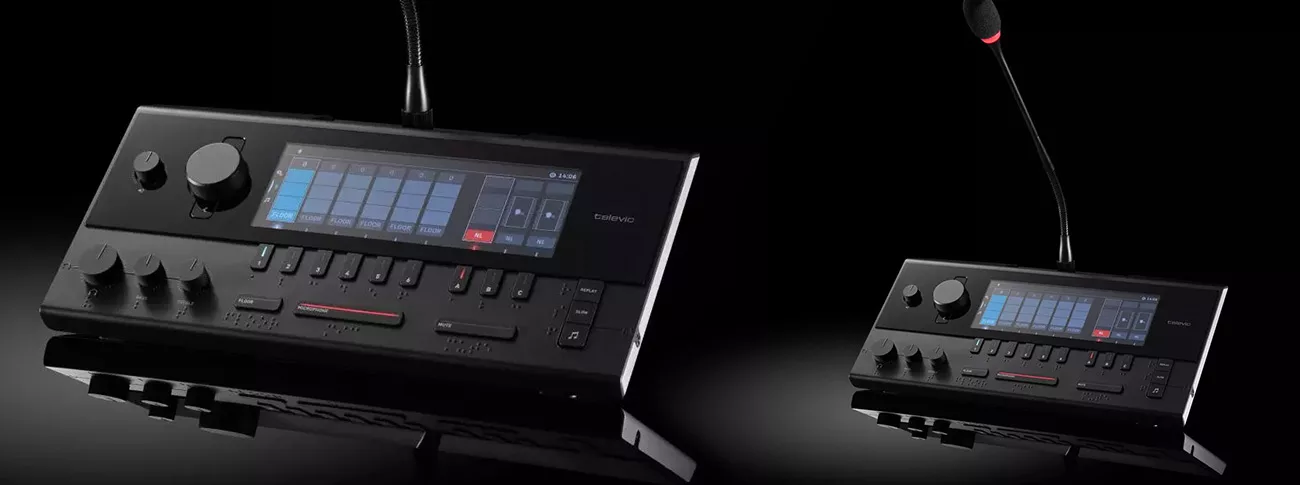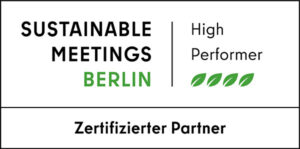Interpreting desks
The basic equipment of an interpreting booth includes an interpreting console. The channel of the language into which the translation is being made is selected at the console. A throat-clearing button makes it possible to briefly interrupt the transmission. A tone control can be used to adjust the signal heard to suit the requirements.
Interpreters can influence whether they want to hear the original sound from the conference room or a relay channel, i.e. the interpreted sound from an adjacent booth. Relay operation should be briefly explained here: At conferences and congresses, many language combinations can occur simultaneously. At the same time, an interpreter does not necessarily master all the languages required. For example, the conference interpreters in a German booth working from English into German do not have to interpret from Japanese as well. As soon as a Japanese speaker takes the floor, the interpreters who do not know the language switch to the "Japanese interpreter booth" and listen to their colleague there translating into English, for example. The interpreters in the "German booth" then in turn translate from English into German.
A headset is connected to the interpreter's desk. The constant speaking distance from the mouth to the boom microphone means that you can always be understood very well, even when moving. The headset must also be lightweight so that it is easy to wear throughout the assignment.
Headsets are less common outside Germany, where people tend to work with stationary table microphones and simple headphones. At first glance, this may seem more comfortable because headphones weigh less than headsets, but depending on the position and agility of the interpreters, the distance between them and the microphone changes constantly, which is perceived as an unpleasant level fluctuation by the participants in the room. If this variant is nevertheless desired, appropriate control components should be planned for a fixed installation.






